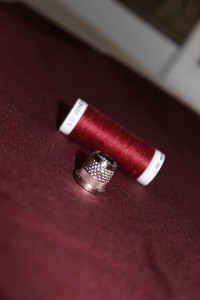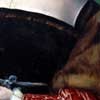I’m in need of a new underskirt or petticoat for my 16th century clothing. I’ve been using the same cotton broadcloth one I made back in 2005, for years now. It is serviceable, but it adds a lot of bulk at the waist and it isn’t very authentic in construction or materials.
So it is time to for a new one.
I have 3.5 yards of a lovely wine colored, lightweight worsted wool donated to me by Noel. (Thank you Noel! <3 )
I’ll be drafting the pattern on the fabric and hand sewing the whole thing with linen thread.
I’m working from the Spanish version of Alcega’s Book. The english translation is out-of-print and painfully expensive. I’m not a native nor fluent spanish speaker so google and a few other resources will be heavily used.
I’m using the translated chart of symbols from the tailors book into modern inches from the Curious Frau’s site.
Taking some inspiration from Other Andrew’s The Alcega Project.
And keeping in mind the information of the Modern Maker has posted about his study of the patterns on his blog and on the Elizabethan Costume Facebook group.
Definition from “Nuevo diccionario portatil, espanol e ingles: compuesto segun los mejore…“
Manteo: s, m : a church man’s cloke; a woman’s under petticoat.
Language is a fluid thing, always changing. The above definition is from 1728 far later than the 16th century. However even later dictionaries simply list it as a cloak or mantle. Context is key, when it is listed as Manteo de Muger, chances are it is a skirt.




